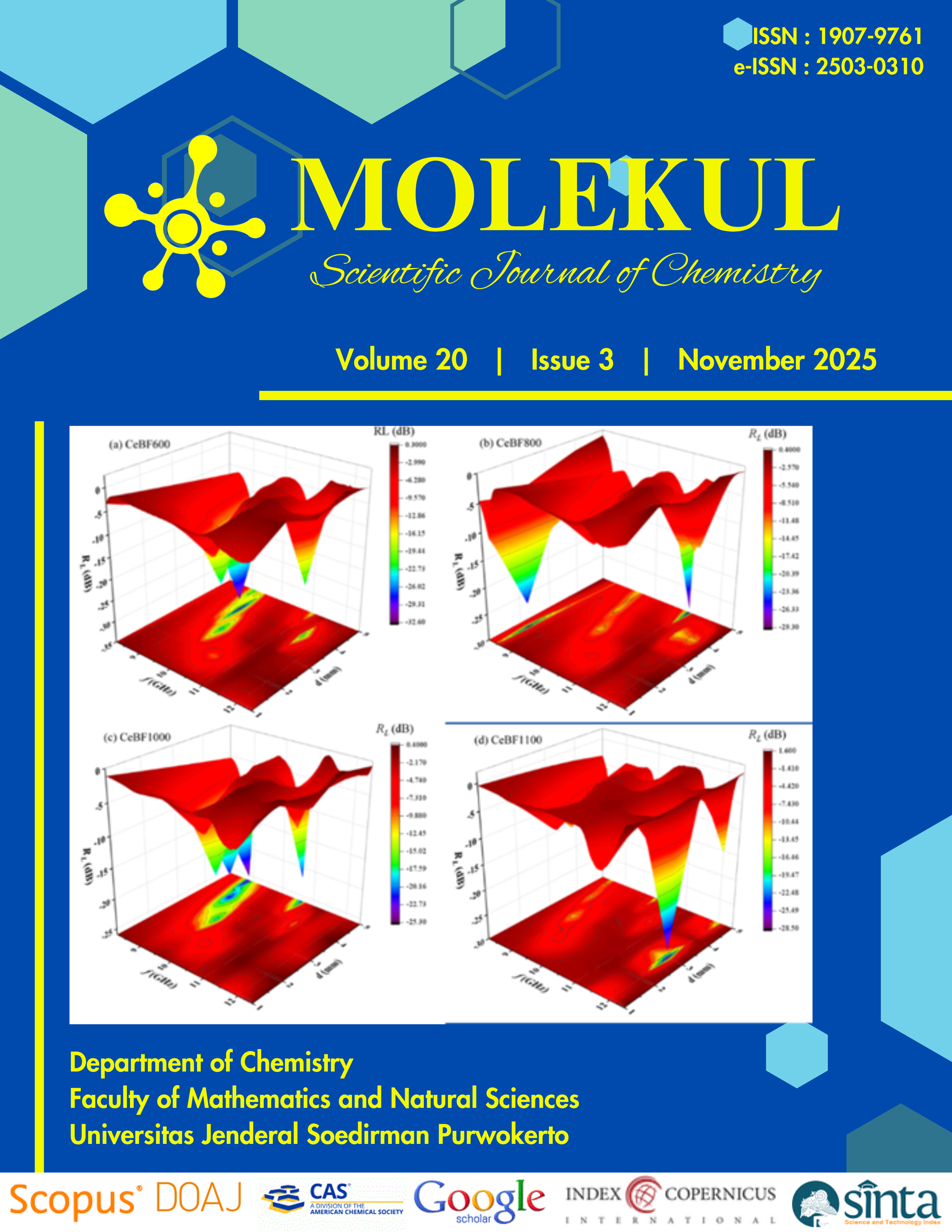Colletotrichum sp. from Nutmeg Leaves Shows Antiproliferative Activity Against MCF-7 Cancer Cells: In Vitro Evaluation, Metabolite Profiling, and Docking Analysis
Abstract
ABSTRACT. Endophytic fungi are recognized as a valuable source of bioactive compounds with significant therapeutic potential, with species from the genus Colletotrichum being particularly noted for their prolific production of structurally diverse secondary metabolites. This study aimed to evaluate the antiproliferative activity of the endophytic fungus Colletotrichum sp., isolated from the leaves of Myristica fragrans Houtt., commonly known as nutmeg against MCF-7 human breast cancer cells using an integrated in vitro and in silico approach. Bioassay-guided fractionation of the fungal extract followed by LC-HRMS analysis led to the identification of three major compounds: 2-amino-1,3,4-octadecanetriol, L-α-palmitin, and muscone-like compound. The antiproliferative activity of each subfraction was assessed using the MTT assay, while molecular docking studies were conducted to evaluate their binding affinities and interaction profiles with estrogen receptor α (ERα). Among the tested subfractions, F2.3 demonstrated the strongest antiproliferative activity, reducing MCF-7 cell viability to 22.08% at a concentration of 50 µg mL-1. The identified compounds demonstrated notable antiproliferative potential, with L-α-Palmitin showing the moderate binding affinity to ERα as indicated by a binding energy of -6.406 kcal mol-1. Molecular docking analyses revealed key interactions, including hydrogen bonding and hydrophobic contacts, contributing to receptor-ligand stability. These findings highlight Colletotrichum sp. as a promising source of antiproliferative agents, thus warranting further investigation into the isolation, structural characterization, and in vivo validation of its active constituents for potential pharmaceutical development.
Keywords: antiproliferative, Colletotrichum sp., endophytic fungi, LC-HRMS, Myristica fragrans Houtt., secondary metabolites.
Authors agree with the statements below:
- Authors automatically transfer the copyright to the MOLEKUL journal and grant the journal right of first publication with the work simultaneously licensed under a Creative Commons Attribution 4.0 International License (CC BY 4.0).
- Authors are able to enter into separate permission for the non-exclusive distribution of the journal's published version of the work (e.g., post it to an institutional repository or publish it in a book), with an acknowledgment of its initial publication in this journal.













